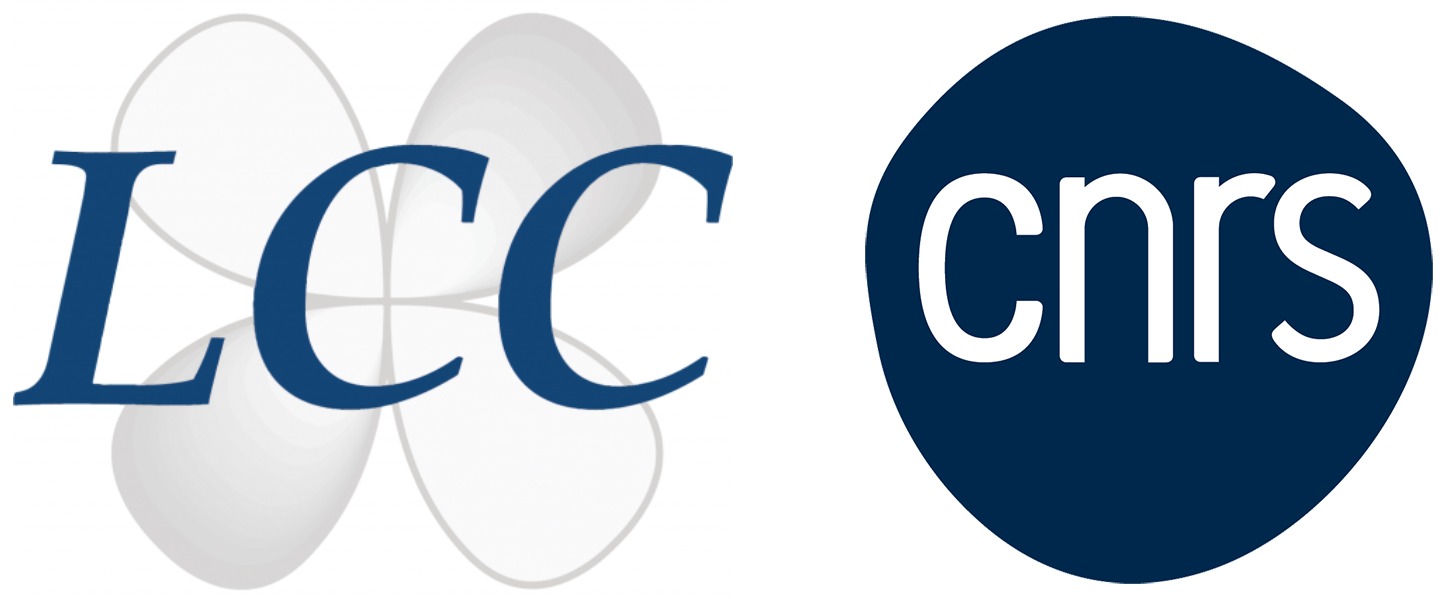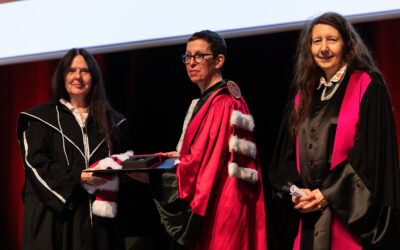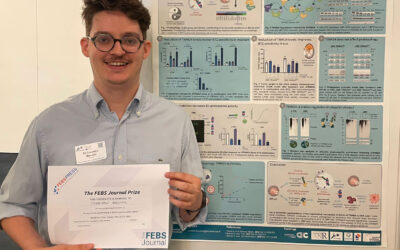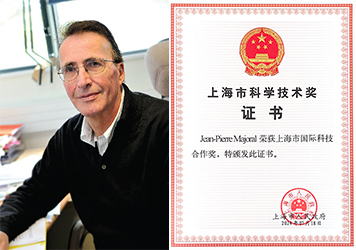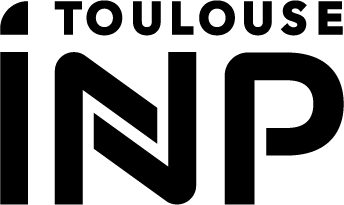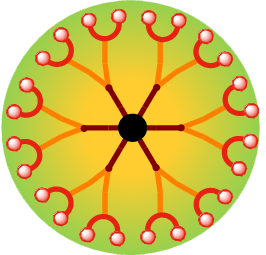
LCC
Activités de l’équipe
L’équipe de recherche « Dendrimères et hétérochimie » s’intéresse à la synthèse et aux propriétés originales d’architectures macromoléculaires dendritiques phosphorées, telles que les dendrimères, les dendrons, les polymères ramifiés, etc…
Ces objets macromoléculaires font l’objet de diverses caractérisations, et leurs propriétés dans les domaines de la catalyse, des matériaux et de la biologie sont particulièrement étudiées.
Membres de l’équipe
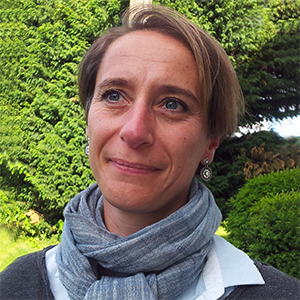
MARAVAL Valérie
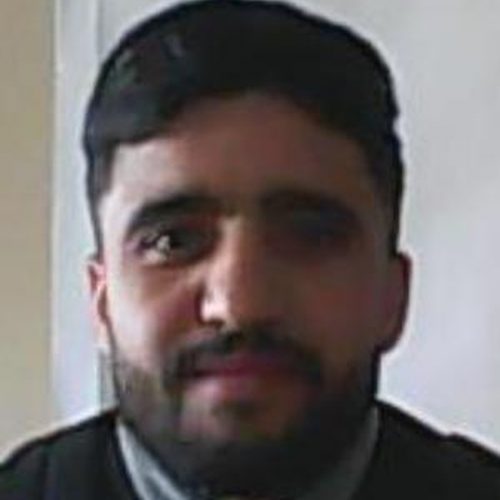
AMRI Saber

ANTRAYGUES Kevin
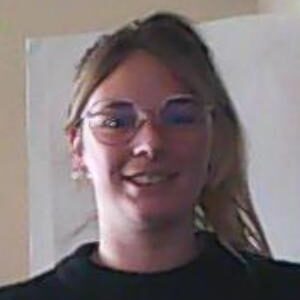
APARICI Charlotte

BELHADJ-TAHAR Safia
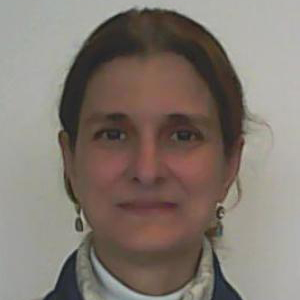
BERNARDES-GENISSON Vania

BEZIAT Aimeric
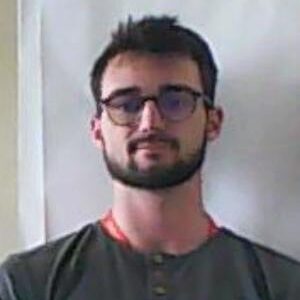
BOUVET Jon

BOUVIER Corentin

BOZOGLOU Dimitra
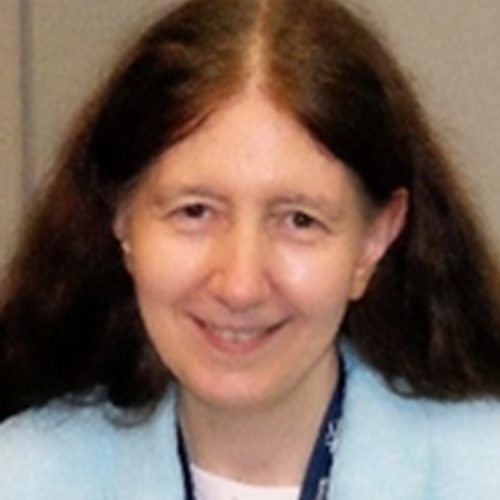
CAMINADE Anne-Marie

CHOUIB Chahinez

DELAVAUX-NICOT Beatrice
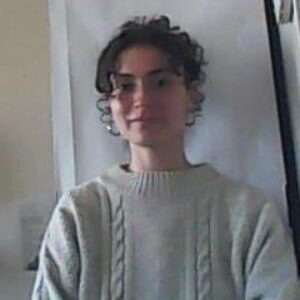
DUMORTIER Lola
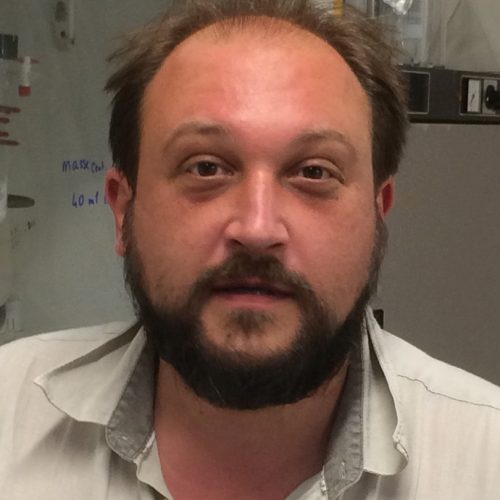
HAMEAU Aurelien

KOUR Jaspreet

LAURENT Regis
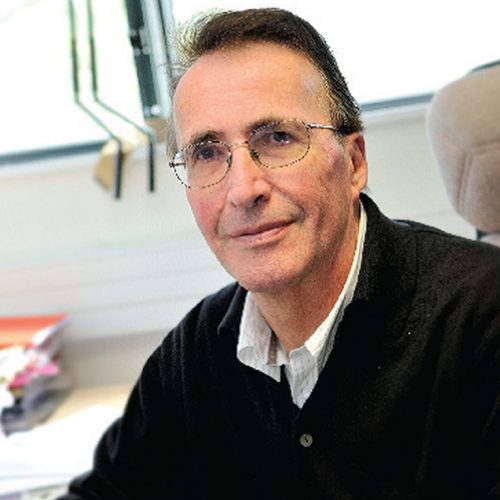
MAJORAL Jean-Pierre
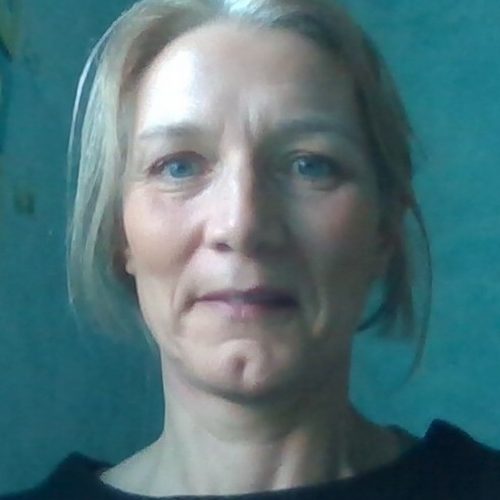
MARTIN-MOTHES Emmanuelle
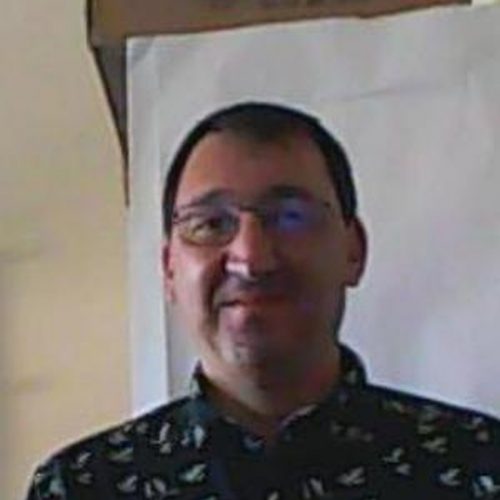
MENENDEZ Christophe
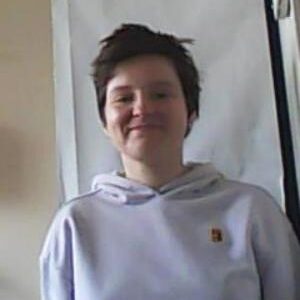
MICHAUT Juliette
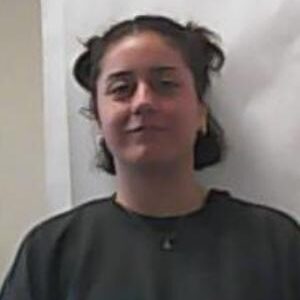
PREZIOSI Emilie

RODRIGUEZ Manuel

SOH Andy

TURRIN Cédric-Olivier

VOGE Alicia
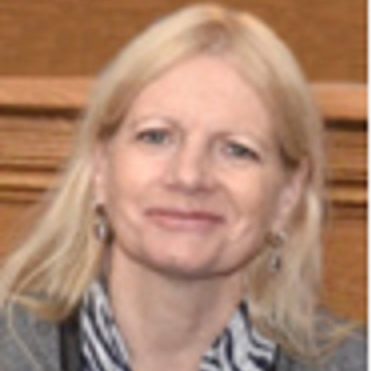
VOITENKO Zoia
Aucun résultat trouvé
Thèmes de recherche
Dendrimères, dendrons, bis-dendrons, polymères dendronisés…
Depuis 1993, nous travaillons à la synthèse d’architectures dendritiques variées.
Chimie organométallique et catalyse par des dendrimères
Nous élaborons des dendrimères décorés par des complexes de métaux de transition ou de lanthanides…
Nanomatériaux à base de dendrimères
Élaboration de matériaux incluant des dendrimères, matériaux hybrides nanostructurés, enrobage de nanoparticules, ou modification de surfaces de matériaux par des dendrimères.
Outils dendritiques pour la biologie
Nous synthétisons des dendrimères spécifiquement fonctionnalisés pour leur utilisation en biologie, et éventuellement fluorescents…
Actualités de l’équipe
Evamarie Hey-Hawkins Docteur Honoris Causa
Evamarie Hey-Hawkins, de l’Université de Leipzig, était parrainée par Anne-Marie Caminade, Directrice de recherche classe exceptionnelle au LCC.
Corentin Bouvier récompensé par le FEBS Journal Prize pour ses travaux de thèse
4ᵉ congrès annuel de la ProteoCure COST Action, Héraklion (Grèce), 23 mai 2025
Jean-Pierre Majoral reçoit le « Shanghai International Award » 2024
Jean-Pierre Majoral est honoré par le 18e prix de sa carrière.
Publications
2025
Biocompatibility of phosphorus dendrimers and their antibacterial properties as potential agents for supporting wound healing
Bielska B., Wrońska N., Kołodziejczyk-Czepas J., Mignani S., Majoral J.-P., Waczulikova I., Lisowska K., Bryszewska M., Miłowska K.
Mol. Pharmaceutics 2025, 22(2), 927-939.
10.1021/acs.molpharmaceut.4c01156 – hal-05142141
Bioactive phosphorus dendrimers deliver protein/drug to tackle osteoarthritis via cooperative macrophage reprogramming
Sun H., Zhan M., Zou Y., Ma J., Liang J., Tang G., Laurent R., Mignani S., Majoral J.-P., Shi X., Shen M.
Biomaterials 2025, 316, 122999/1-15.
10.1016/j.biomaterials.2024.122999 – hal-05142085
Codelivery of fibronectin and rapamycin via bioactive phosphorus dendrimers to ameliorate Alzheimer’s disease through macrophage autophagy, oxidative stress alleviation and polarization modulation
Zhan M., Dai W., Sun H., Gao Y., Zou Y., Laurent R., Sun X., Mignani S., Majoral J.-P., Shen M., Shi X.
Nano Today 2025, 61, 102664/1-11.
10.1016/j.nantod.2025.102664 – hal-05142018
Mesenchymal stem-cell-derived exosomes loaded with phosphorus dendrimers and quercetin treat Parkinson’s Disease by modulating inflammatory immune microenvironment
Zhang L., Zhan M., Sun H., Zou Y., Laurent R., Mignani S., Majoral J.-P., Cao X., Shen M., Shi X.
ACS Appl. Mater. Interfaces 2025, 17(22), 32013-32027.
10.1021/acsami.5c05809 – hal-05141944
pH-controlled gliding motions in pillar[5]arene-containing molecular shuttles
Becharguia N., Nierengarten I., Sournia-Saquet A., Wasielewski E., Abidi R., Delavaux-Nicot B., Nierengarten J.-F.
ChemistryEurope 2025, 2400115/1-11.
10.1002/ceur.202400115 – hal-05113985
Les dendrimères : exemples et propriétés biologiques
Caminade A.-M.
CultureSciences-Chimie 2025 – hal-05125422
Homogeneous and heterogeneous dendrimer-based catalysts for Csp2-Csp2 and Csp2-Csp cross-coupling reactions
Maraval V., Hameau A., Laurent R., Caminade A.-M.
Coord. Chem. Rev. 2025, 542, 216788/1-37.
10.1016/j.ccr.2025.216788 – hal-05111448
Sensitive chemical and biological sensors based on phosphorus dendrimers
Caminade A.-M.
Polymers 2025, 17(12), 1591/1-19.
10.3390/polym17121591 – hal-05111005
Les dendrimères, des macromolécules aux multiples propriétés
Caminade A.-M.
L’Act. Chim. 2025, 504, 15-18.
10.63133/scf.act-chim.2025.504.02 – hal-05085287
Role of TRIM24 in the regulation of proteasome-autophagy crosstalk in bortezomib-resistant mantle cell lymphoma
Bouvier C., Gonzalez-Santamarta M., Profitós-Pelejà N., Armengol M., Quinet G., Alasseur Q., Ceccato L., Xolalpa W., Freire R., Guillermet-Guibert J., Reybier K., Caminade A.-M., Beck H. C., Carvalho A. S., Matthiesen R., Rain J.-C., Sutherland J. D., Barrio R., Roué G., Rodriguez M. S.
Cell Death Discov. 2025, 11(1), 108/1-13.
10.1038/s41420-025-02355-6 – hal-05065197
Dendritic metallodrugs: An overview of their anticancer properties
Caminade A.-M., Bernardes-Génisson V., Hameau A., Laurent R., Maraval V., Rodriguez M. S., Turrin C.-O.
Coord. Chem. Rev. 2025, 535, 216606/1-48.
10.1016/j.ccr.2025.216606 – hal-05064253
Proteome alterations in peripheral immune cells of DLBCL patients and evidence of cancer extracellular vesicles involvement
Ejtehadifar M., Zahedi S., Gameiro P., Cabeçadas J., Rodriguez M. S., da Silva M. G., Beck H. C., Matthiesen R., Carvalho A. S.
Biochim. Biophys. Acta, Mol. Basis Dis. 2025, 1871(6), 167842/1-12.
10.1016/j.bbadis.2025.167842 – hal-05065744
Beidellite/montmorillonite-phosphorus-based dendrimer organoclays: structural features and chromate interaction analysis
Hajjaji M., Beraa A., Laurent R., Caminade A.-M.
Sol-Gel Sci. Technol. 2025, 114(1), 296-312.
10.1007/s10971-024-06662-9 – hal-05064990
Thiophosphate-based covalent Organic Framework (COF) or Porous Organic Polymer (POP)?
Menendez C., Coppel Y., Martin B., Caminade A.-M.
Macromol 2025, 5(1), 10/1-9.
10.3390/macromol5010010 – hal-05052505
2024
Dendrimers: A themed issue in honor of Professor Donald A. Tomalia on the occasion of his 85th birthday, recognizing his outstanding achievements in advancing the field of dendrimers
Caminade A.-M.
Pharmaceutics 2024, 16(12), 1608/1-4.
https://doi.org/10.3390/pharmaceutics16121608
https://hal.science/hal-04847929
Natural and bioinspired lipidic alkynylcarbinols as leishmanicidal, antiplasmodial, trypanocidal, fungicidal, antibacterial, and antimycobacterial agents
Bouvet J., Maraval V., Ballereau S., Bernardes-Génisson V., Génisson Y.
Journal of Natural Products 2024, 87(10), 2550-2566.
https://doi.org/10.1021/acs.jnatprod.4c00513
https://hal.science/hal-04739679
Dinuclear tricarbonylrhenium(i) complexes: impact of regioisomerism on the photoluminescence properties
Le Garrec S., Martins-Bessa D., Wolff M., Delavaux-Nicot B., Mallet-Ladeira S., Serpentini C.-L., Benoist E., Bedos-Belval F., Fery-Forgues S.
Dalton Transactions 2024, 53(40), 16512-16529.
http://dx.doi.org/10.1039/D4DT01907E
https://hal.science/hal-04738983
Brain delivery of fibronectin through bioactive phosphorous dendrimers for Parkinson’s disease treatment via cooperative modulation of microglia
Dai W., Zhan M., Gao Y., Sun H., Zou Y., Laurent R., Mignani S., Majoral J.-P., Shen M., Shi X.
Bioactive Materials 2024, 38, 45-54.
https://doi.org/10.1016/j.bioactmat.2024.04.005
https://hal.science/hal-04977364
Phosphorus dendrimers co-deliver fibronectin and edaravone for combined ischemic stroke treatment via cooperative modulation of microglia/neurons and vascular regeneration
Ma J., Zhan M., Sun H., He L., Zou Y., Huang T., Karpus A., Majoral J.-P., Mignani S., Shen M., Shi X.
Advanced Healthcare Materials 2024, 13(29), 2401462/1-15.
https://doi.org/10.1002/adhm.202401462
https://hal.science/hal-04977388
ProteoCure: A European network to fine-tune the proteome
Coux O., Farràs R., Abbas M., Barrio R., Blattner C., Brix K., Chachami G., Chevet E., Clague M. J., Dantuma N., Rankov A. D., Galdeano C., Giglione C., Glickman M. H., Lalmanach G., Lindon C., Matthiesen R., Meroni G., Pick E., Poidevin L., Rivas C., Rodriguez M. S., Sammler E., Shiber A., Skoulakis E. M. C., Stein M., Vertegaal A. C. O.
Biochimie 2024, 226, 6-9.
https://doi.org/10.1016/j.biochi.2024.06.004
https://hal.science/hal-04737518
Functionalization of Si- and Al-based materials with phosphorus dendrimers and their properties
Caminade A.-M.
Zeitschrift fur Anorganische und Allgemeine Chemie 2024, 650(22), e202400118.
https://doi.org/10.1002/zaac.202400118
https://hal.science/hal-04711659
Reactivity of the [HFe(CO)4]− hydride for the synthesis of low coordinated phosphorus derivatives
Caminade A.-M.
Inorganica Chimica Acta 2024, 573, 122336/1-7.
https://doi.org/10.1016/j.ica.2024.122336
https://hal.science/hal-04693974
Selected properties of phosphorus dendrimers: green approaches to catalysis
Caminade A.-M., Maraval V.
Comptes Rendus Chimie 2024, 27(S2), 39-55.
https://doi.org/10.5802/crchim.277
https://hal.science/hal-04654010
Diverse approaches for the difunctionalization of PPH dendrimers, precise versus stochastic: How does this influence catalytic performance?
Petriccone M., Laurent R., Caminade A.-M., Sebastián R. M.
ACS Macro Letters 2024, 13(7), 853-858.
https://doi.org/10.1021/acsmacrolett.4c00204
https://hal.science/hal-04654172
Front cover: Diverse approaches for the difunctionalization of PPH dendrimers, precise versus stochastic: How does this influence catalytic performance?
Petriccone M., Laurent R., Caminade A.-M., Sebastián R. M.
ACS Macro Letters 2024, 13(7).
https://pubs.acs.org/toc/amlccd/13/7
Brain delivery of biomimetic phosphorus dendrimer/antibody nanocomplexes for enhanced glioma immunotherapy via immune modulation of T cells and natural killer cells
Peng Y., Zhan M., Karpus A., Zou Y., Mignani S., Majoral J.-P., Shi X., Shen M.
ACS Nano 2024, 18(14), 10142-10155.
https://doi.org/10.1021/acsnano.3c13088
https://hal.science/hal-04632616
Recent advances in multifunctional dendrimer-based complexes for cancer treatment
Shcharbin D., Zhogla V., Abashkin V., Gao Y., Majoral J.-P., Mignani S., Shen M., Bryszewska M., Shi X.
WIREs Nanomedicine and Nanobiotechnology 2024, 16(2), e1951/1-18.
https://doi.org/10.1002/wnan.1951
https://hal.science/hal-04632602
Bioactive phosphorus dendrimers as a universal protein delivery system for enhanced anti-inflammation therapy
Sun H., Zhan M., Karpus A., Zou Y., Li J., Mignani S., Majoral J.-P., Shi X., Shen M.
ACS Nano 2024, 18(3), 2195-2209.
https://doi.org/10.1021/acsnano.3c09589
https://hal.science/hal-04632575
Nanoparticle-mediated multiple modulation of bone microenvironment to tackle osteoarthritis
Zhan M., Sun H., Wang Z., Li G., Yang R., Mignani S., Majoral J.-P., Shen M., Shi X.
ACS Nano 2024, 18(15), 10625-10641.
https://doi.org/10.1021/acsnano.4c00909
https://hal.science/hal-04632647
The effects of alkyl substitution on the aggregation of π conjugated dyes: spectroscopic study and modelling
Bardi B., Saquet A., Moreau A., Moineau-Chane Ching K., Terenziani F.
Physical Chemistry Chemical Physics 2024, 26(25), 17796-17808.
http://dx.doi.org/10.1039/D4CP01579G
https://hal.science/hal-04606301
A water-soluble polyphosphorhydrazone Janus dendrimer built by “click” chemistry as support for Ru-complexes in catalysis
Cejas-Sánchez J., Caminade A.-M., Kajetanowicz A., Grela K., Sebastián R. M.
Dalton Transactions 2024, 53(21), 9120-9129.
http://dx.doi.org/10.1039/D3DT04376B
https://hal.science/hal-04597712
1,2,3-Triazol-5-ylidene- vs. 1,2,3-triazole-based tricarbonylrhenium(i) complexes: influence of a mesoionic carbene ligand on the electronic and biological properties
Vanucci-Bacqué C., Wolff M., Delavaux-Nicot B., Abdallah A. M., Mallet-Ladeira S., Serpentini C.-L., Bedos-Belval F., Fong K. W., Ng X. Y., Low M. L., Benoist E., Fery-Forgues S.
Dalton Transactions 2024, 53(27), 11276-11294.
http://dx.doi.org/10.1039/D4DT00922C
https://hal.science/hal-04586541
Coordination Chemistry Inspires Molecular Catalysis
Poli R., Caminade A.-M. (Eds).
Zenodo, 2024.
https://doi.org/10.5281/zenodo.10966127
https://hal.science/hal-04548441
Dendritic pyridine–imine copper complexes as metallo-drugs
Laurent R., Maraval V., Bernardes-Génisson V., Caminade A.-M.
Molecules 2024, 29 (8), 1800/1-18.
https://doi.org/10.3390/molecules29081800
https://hal.science/hal-04548084
Multivalent pyrrolidines acting as pharmacological chaperones against Gaucher disease
Borie-Guichot M., Lan Tran M., Garcia V., Oukhrib A., Rodriguez F., Turrin C.-O., Levade T., Génisson Y., Ballereau S., Dehoux C.
Bioorganic Chemistry 2024, 146, 107295/1-9.
https://doi.org/10.1016/j.bioorg.2024.107295
https://hal.science/hal-04536441
Two-photon absorbing dendrimers and their properties—An overview
Maraval V., Caminade A.-M.
International Journal of Molecular Sciences 2024, 25 (6), 3132/1-26.
https://doi.org/10.3390/ijms25063132
https://hal.science/hal-04532522
Two-photon absorbing dendrimers
Maraval V., Caminade A.-M.
Encyclopedia Platform. Bâle (Switzerland), 2024, Entry 56221.
https://encyclopedia.pub/entry/56221
https://hal.science/hal-04532562
From stilbenes to carbo-stilbenes: An encouraging prospect
Zhu C., Saquet A., Maraval V., Bijani C., Cui X., Poater A., Chauvin R.
Chemistry – A European Journal 2024, 30(26), e202400451/1-7.
https://doi.org/10.1002/chem.202400451
https://hal.science/hal-04532883
Polycationic phosphorous dendrimer potentiates multiple antibiotics against drug-resistant mycobacterial pathogens
Imran M., Singh S., Ahmad M. N., Malik P., Mukhopadhyay A., Yadav K. S., Gupta U. D., Mugale M. N., Mitra K., Srivastava K. K., Chopra S., Mignani S., Apartsin E., Majoral J.-P., Dasgupta A.
Biomedicine & Pharmacotherapy 2024, 173, 116289/1-12.
https://doi.org/10.1016/j.biopha.2024.116289
https://hal.science/hal-04528925
Breaking bad proteins—discovery approaches and the road to clinic for degraders
Bouvier C., Lawrence R., Cavallo F., Xolalpa W., Jordan A., Hjerpe R., Rodriguez M. S.
Cells 2024, 13 (7), 578/1-37.
https://doi.org/10.3390/cells13070578
https://hal.science/hal-04522952
SUMOylation controls Hu antigen R posttranscriptional activity in liver cancer
Lachiondo-Ortega S., Rejano-Gordillo C. M., Simon J., Lopitz-Otsoa F., C. Delgado T., Mazan-Mamczarz K., Goikoetxea-Usandizaga N., Zapata-Pavas L. E., García-del Río A., Guerra P., Peña-Sanfélix P., Hermán-Sánchez N., Al-Abdulla R., Fernandez-Rodríguez C., Azkargorta M., Velázquez-Cruz A., Guyon J., Martín C., Zalamea J. D., Egia-Mendikute L., Sanz-Parra A., Serrano-Maciá M., González-Recio I., Gonzalez-Lopez M., Martínez-Cruz L. A., Pontisso P., Aransay A. M., Barrio R., Sutherland J. D., Abrescia N. G. A., Elortza F., Lujambio A., Banales J. M., Luque R. M., Gahete M. D., Palazón A., Avila M. A., G. Marin J. J., De S., Daubon T., Díaz-Quintana A., Díaz-Moreno I., Gorospe M., Rodríguez M. S., Martínez-Chantar M. L.
Cell Reports 2024, 43 (3), 113924/1-20.
https://doi.org/10.1016/j.celrep.2024.113924
https://hal.science/hal-04522023
Stabilization of luminescent mononuclear three-coordinate cui complexes by two distinct cavity-shaped diphosphanes obtained from a single α-cyclodextrin precursor
Phan T.-A., Jouffroy M., Matt D., Armaroli N., Saavedra Moncada A., Bandini E., Delavaux-Nicot B., Nierengarten J.-F., Armspach D.
Chemistry – A European Journal 2023, 30 (7), e202302750/1-9.
https://doi.org/10.1002/chem.202302750
https://hal.science/hal-04322174
Unsymmetrical low-generation cationic phosphorus dendrimers as a nonviral vector to deliver microRNA for breast cancer therapy
Zou Y., Shen S., Karpus A., Sun H., Laurent R., Caminade A.-M., Shen M., Mignani S., Shi X., Majoral J.-P.
Biomacromolecules 2024, 25 (2), 1171-1179.
https://doi.org/10.1021/acs.biomac.3c01169
https://hal.science/hal-04502427
Carboranylphosphines: B9-substituted derivatives with enhanced reactivity for the anchoring to dendrimers
Milewski M., Caminade A.-M., Mallet-Ladeira S., Lledós A., Lönnecke P., Hey-Hawkins E.
Chemistry – A European Journal 2024, 30(13), e202303867/1-8.
https://doi.org/10.1002/chem.202303867
https://hal.science/hal-04428400
SUMOylation modulates eIF5A activities in both yeast and pancreatic ductal adenocarcinoma cells
Seoane R., Lama-Díaz T., Romero A. M., El Motiam A., Martínez-Férriz A., Vidal S., Bouzaher Y. H., Blanquer M., Tolosa R. M., Castillo Mewa J., Rodríguez M. S., García-Sastre A., Xirodimas D., Sutherland J. D., Barrio R., Alepuz P., Blanco M. G., Farràs R., Rivas C.
Cellular & Molecular Biology Letters 2024, 29 (1), 15/1-29.
https://doi.org/10.1186/s11658-024-00533-5
https://hal.science/hal-04428031
2023
Smart and bioinspired systems for overcoming biological barriers and enhancing disease theranostics
Li X., Gao Y., Li H., Majoral J.-P., Shi X., Pich A.
Progress in Materials Science 2023, 140, 101170/1-64.
https://doi.org/10.1016/j.pmatsci.2023.101170
https://hal.science/hal-04632534
Phosphorus core–shell tecto dendrimers for enhanced tumor imaging: the rigidity of the backbone matters
Zhan M., Wang D., Zhao L., Chen L., Ouyang Z., Mignani S., Majoral J.-P., Zhao J., Zhang G., Shi X., Shen M.
Biomaterials Science 2023, 11(22), 7387-7396.
http://dx.doi.org/10.1039/D3BM01198D
https://hal.science/hal-04632450
Stabilization of luminescent mononuclear three-coordinate cui complexes by two distinct cavity-shaped diphosphanes obtained from a single α-cyclodextrin precursor
Phan T.-A., Jouffroy M., Matt D., Armaroli N., Saavedra Moncada A., Bandini E., Delavaux-Nicot B., Nierengarten J.-F., Armspach D.
Chemistry – A European Journal 2023, e202302750/1-9.
https://doi.org/10.1002/chem.202302750
https://hal.science/hal-04322174
Phenyl dialkynylcarbinols, a bioinspired series of synthetic antitumor acetylenic lipids
Bossuat M., Rullière P., Preuilh N., Peixoto A., Joly E., Gomez J.-G., Bourkhis M., Rodriguez F., Gonçalves F., Fabing I., Gaspard H., Bernardes-Génisson V., Maraval V., Ballereau S., Chauvin R., Britton S., Génisson Y.
Journal of Medicinal Chemistry 2023, 66(20), 13918-13945.
https://doi.org/10.1021/acs.jmedchem.3c00859
https://hal.science/hal-04273137
“Click” chemistry for the functionalization of graphene oxide with phosphorus dendrons: Synthesis, characterization and preliminary biological properties
Alami O., Laurent R., Tassé M., Coppel Y., Bignon J., El Kazzouli S., Majoral J.-P., El Brahmi N., Caminade A.-M.
Chemistry – A European Journal 2023, 29(66), e202302198/1-10.
https://doi.org/10.1002/chem.202302198
https://hal.science/hal-04269848
Functionalization of graphene oxide surfaces with phosphorus dendrimer and dendron
Alami O., Laurent R., Tassé M., Coppel Y., Collière V., Bignon J., Majoral J.-P., El Kazzouli S., El Brahmi N., Caminade A.-M.
FlatChem 2023, 42, 100564/1-12.
https://doi.org/10.1016/j.flatc.2023.100564
https://hal.science/hal-04268533
The Ubiquitin Code
Rodriguez M. S., Bario R. (Eds). Springer: New York, 2023. (978-1-0716-2858-4).
http://dx.doi.org/10.1007/978-1-0716-2859-1
https://hal.science/hal-04269638
Isolation and Mass Spectrometry Identification of K48 and K63 Ubiquitin Proteome Using Chain-Specific Nanobodies
Gonzalez-Santamarta M., Ceccato L., Carvalho A. S., Rain J.-C., Matthiesen R., Rodriguez M. S.
in Methods in Molecular Biology The Ubiquitin Code, M. S. Rodriguez, R. Barrio (Eds). Springer: New York, 2023, pp. 125-136. (978-1-0716-2859-1).
https://doi.org/10.1007/978-1-0716-2859-1_9
https://hal.science/hal-04269347
A Computational Tool for Analysis of Mass Spectrometry Data of Ubiquitin-Enriched Samples
Matthiesen R., Rodriguez M. S., Carvalho A. S.
in Methods in Molecular Biology The Ubiquitin Code, M. S. Rodriguez, R. Barrio (Eds). Springer: New York, 2023, pp. 205-214. (978-1-0716-2859-1).
https://doi.org/10.1007/978-1-0716-2859-1_15
https://hal.science/hal-04269366
Analysis of ATG8 Family Members Using LC3-Interacting Regions (LIR)-Based Molecular Traps
Quinet G., Génin P., Belgareh-Touzé N., Ozturk O., Weil R., Cohen M. M., Legouis R., Rodriguez M. S.
in Methods in Molecular Biology. The Ubiquitin Code, M. S. Rodriguez, R. Barrio (Eds). Springer: New York, 2023, pp. 191-204. (978-1-0716-2859-1).
https://doi.org/10.1007/978-1-0716-2859-1_14
https://hal.science/hal-03991599
Alkyl chains impact in polymer-based organic solar cells
Moineau-Chane Ching K. I.
Encyclopedia Platform. Bâle (Switzerland), 2023, Entry 49374.
https://encyclopedia.pub/entry/49374
https://hal.science/hal-04211180
Impact of alkyl-based side chains in conjugated materials for bulk heterojunction organic photovoltaic cells-A review
Moineau-Chane Ching K. I.
Energies 2023, 16(18), 6639.
https://doi.org/10.3390/en16186639
https://hal.science/hal-04209579
Dendritic structures functionalized with boron clusters, in particular carboranes, and their biological properties
Caminade A.-M., Milewski M., Hey-Hawkins E.
Pharmaceutics 2023, 15(8), 2117/1-29.
https://doi.org/10.3390/pharmaceutics15082117
https://hal.science/hal-04195212
Interaction of phosphorus dendrimers with pre-existing metal nanoparticles
Caminade A.-M.
Encyclopedia Platform. Bâle (Switzerland), 2023, Entry 47635.
https://encyclopedia.pub/entry/47635
https://hal.science/hal-04195444
Phosphorus dendrimers for the synthesis of metal nanoparticles
Caminade A.-M.
Encyclopedia Platform. Bâle (Switzerland), 2023, Entry 47977.
https://encyclopedia.pub/entry/47977
https://hal.science/hal-04195529
Pitfalls of a structure determination: The structure of closo-9-[4-(dibenzylamino)phenyl]-1,2-dicarbadodecaborane(12)
Milewski M., Caminade A.-M., Hey-Hawkins E., Lonnecke P.
in Modern approaches and tools for teaching crystallography, G. Diaz de Delgado, S. Parkin (Eds). IUCr: Chester 2023, Art. 6 (Issu de Acta Crystallographica 2022, E78, pp. 1145-1150).
https://journals.iucr.org/special_issues/2023/teaching/
https://doi.org/10.1107/S205698902201043X
https://hal.science/hal-04195359
Phosphorus dendrimers for metal-free ligation: Design of multivalent pharmacological chaperones against Gaucher disease
Tran M. L., Borie-Guichot M., Garcia V., Oukhrib A., Génisson Y., Levade T., Ballereau S., Turrin C. O., Dehoux C.
Chemistry – A European Journal 2023, 29(53), e202301210/1-9.
https://doi.org/10.1002/chem.202301210
https://hal.science/hal-04175496
Interplay between nanoparticles and phosphorus dendrimers, and their properties
Caminade A.-M.
Molecules 2023, 28(15), 5739/1-22.
https://doi.org/10.3390/molecules28155739
https://hal.science/hal-04174099
Strategies for the preparation of phosphorus Janus dendrimers
Cejas-Sánchez J., Kajetanowicz A., Grela K., Caminade A.-M., Sebastían Perez R. M.
Encyclopedia Platform. MDPI: Bâle (Switzerland), 2023, Entry 47345.
https://encyclopedia.pub/entry/47345
https://hal.science/hal-04174119
Strategies for the preparation of phosphorus Janus dendrimers and their properties
Cejas-Sánchez J., Kajetanowicz A., Grela K., Caminade A.-M., Sebastián R. M.
Molecules 2023, 28(14), 5570/1-18.
https://doi.org/10.3390/molecules28145570
https://hal.science/hal-04169247
Tuning the photoluminescence properties of SLE- and MRL-active tricarbonylrhenium(I) complexes through minor structural changes of the organic ligand
Poirot A., Leygue N., Delavaux-Nicot B., Saffon-Merceron N., Allain C., Benoist E., Fery-Forgues S.
Journal of Photochemistry and Photobiology A: Chemistry 2023, 445, 114982.
https://doi.org/10.1016/j.jphotochem.2023.114982
https://hal.science/hal-04158433
Low-generation cationic phosphorus dendrimers: Novel approach to tackle drug-resistant S. aureus in vitro and in vivo
Apartsin E., Akhir A., Kaul G., Saxena D., Laurent R., Srivastava K. K., Mignani S., Majoral J.-P., Chopra S.
Biomacromolecules 2023, 24(7), 3215-3227.
https://doi.org/10.1021/acs.biomac.3c00266
https://hal.science/hal-04174818
Expanding chitosan reticular chemistry using multifunctional and thermally stable phosphorus-containing dendrimers
Blilid S., Boundor M., Katir N., El Achaby M., Lahcini M., Majoral J.-P., Bousmina M., El Kadib A.
Macromolecules 2023, 56(3), 1223-1235.
https://doi.org/10.1021/acs.macromol.2c02358
https://hal.science/hal-04174850
Useful synthetic pathways to original, stable tunable neutral and anionic phosphorus dendrimers: new opportunities to expand dendrimer space
Karpus A., Mignani S., Apartsin E., Zablocka M., Shi X., Majoral J.-P.
New Journal of Chemistry 2023, 47(5), 2474-2478.
http://dx.doi.org/10.1039/D2NJ05157E
https://hal.science/hal-04174881
Effects of dendrimer-microRNA nanoformulations against glioblastoma stem cells
Knauer N., Meschaninova M., Muhammad S., Hänggi D., Majoral J.-P., Kahlert U. D., Kozlov V., Apartsin E. K.
Pharmaceutics 2023, 15(3), 968/1-19.
https://doi.org/10.3390/pharmaceutics15030968
https://hal.science/hal-04174917
Effects of cationic dendrimers and their complexes with microRNAs on immunocompetent cells
Knauer N., Pashkina E., Aktanova A., Boeva O., Arkhipova V., Barkovskaya M., Meschaninova M., Karpus A., Majoral J.-P., Kozlov V., Apartsin E.
Pharmaceutics 2023, 15(1), 148/1-16.
https://doi.org/10.3390/pharmaceutics15010148
https://hal.science/hal-04174971
Cationic phosphorus dendron nanomicelles deliver microRNA mimics and microRNA inhibitors for enhanced anti-inflammatory therapy of acute lung injury
Li J., Chen L., Sun H., Zhan M., Laurent R., Mignani S., Majoral J.-P., Shen M., Shi X.
Biomaterials Science 2023, 11(4), 1530-1539.
http://dx.doi.org/10.1039/D2BM01807A
https://hal.science/hal-04175366
Endocannabinoid degradation enzyme inhibitors as potential antipsychotics: A medicinal chemistry perspective
Mangiatordi G. F., Cavalluzzi M. M., Delre P., Lamanna G., Lumuscio M. C., Saviano M., Majoral J.-P., Mignani S., Duranti A., Lentini G.
Biomedicines 2023, 11(2), 469/1-18.
https://doi.org/10.3390/biomedicines11020469
https://hal.science/hal-04174953
Effect of amphiphilic phosphorous dendrons on the conformation, secondary structure, and zeta potential of albumin and thrombin
Terehova M., Magiera J., Qiu J., Majoral J.-P., Shi X., Mignani S., Ionov M., Waczulikova I., Bryszewska M., Shcharbin D.
Polymer Bulletin 2023, 80(8), 9181-9193.
https://doi.org/10.1007/s00289-022-04512-8
https://hal.science/hal-04174803
Amphiphilic phosphorus dendrons associated with anti-inflammatory siRNA reduce symptoms in murine collagen-induced arthritis
Yu Z., Tsapis N., Fay F., Chen L., Karpus A., Shi X., Cailleau C., García Pérez S., Huang N., Vergnaud J., Mignani S., Majoral J.-P., Fattal E.
Biomacromolecules 2023, 24(2), 667-677.
https://doi.org/10.1021/acs.biomac.2c01117
https://hal.science/hal-04101289v1
Phosphorous dendron micelles as a nanomedicine platform for cooperative tumor chemoimmunotherapy via synergistic modulation of immune cells
Zhan M., Qiu J., Fan Y., Chen L., Guo Y., Wang Z., Li J., Majoral J.-P., Shi X.
Advanced Materials 2023, 35(3), 2208277/1-17.
https://doi.org/10.1002/adma.202208277
https://hal.science/hal-04174870
LGG-1/GABARAP lipidation is not required for autophagy and development in Caenorhabditis elegans
Leboutet R., Largeau C., Müller L., Prigent M., Quinet G., Rodriguez M. S., Cuif M.-H., Hoppe T., Culetto E., Lefebvre C., Legouis R.
eLife 2023, 12, e85748.
https://doi.org/10.7554/eLife.85748
https://hal.science/hal-04157249
Amphiphilic phosphorous dendron micelles co-deliver microRNA inhibitor and doxorubicin for augmented triple negative breast cancer therapy
Chen L., Zhan M., Li J., Cao L., Sun H., Laurent R., Mignani S., Caminade A.-M., Majoral J.-P., Shi X.
Journal of Materials Chemistry B 2023, 11 (24), 5483-5493.
http://dx.doi.org/10.1039/D2TB02114E
https://hal.science/hal-04144460
Fluorescent groups at the core of phosphorus dendrons and their properties
Caminade A.-M., Hameau A., Moineau-Chane Ching K., Turrin C.-O.
Helvetica Chimica Acta 2023, 106, e202300048/1-13.
https://doi.org/10.1002/hlca.202300048
https://hal.science/hal-04121917
Pillar[5]arene-porphyrin conjugates: from molecular flowers to photoactive rotaxanes
Nierengarten I., Hahn U., Holler M., Delavaux-Nicot B., Maisonhaute E., Nierengarten J.-F.
Journal of Porphyrins and Phthalocyanines 2023, 27(01n04), 47-54.
https://doi.org/10.1142/s1088424623500384
https://hal.science/hal-04087240
The chemistry of P=N−P=X (X=S, O, NR) linkages for the synthesis of dendritic structures
Maraval V., Laurent R., Caminade A.-M.
ChemPlusChem 2023, 88(4), e202300064/1-23.
https://doi.org/10.1002/cplu.202300064
https://hal.science/hal-04064179
Personalized and Precision Medicine 2022
Caminade A.-M. (Ed.)
MDPI: Bâle, 2023. 272 p. (978-3-036-57045-7 ).
https://doi.org/10.3390/books978-3-0365-7044-0
https://hal.science/hal-04058706
Phosphorus dendrimers as physical hydrogels and their properties
Apartsin E., Caminade A.-M.
Encyclopedia Platform. MDPI: Bâle (Switzerland), 2023, Entry 41022.
https://encyclopedia.pub/entry/41022
https://hal.science/hal-04039186
Using a diphenyl-bi-(1,2,4-triazole) tricarbonylrhenium(i) complex with intramolecular π–π stacking interaction for efficient solid-state luminescence enhancement
Poirot A., Vanucci-Bacqué C., Delavaux-Nicot B., Meslien C., Saffon-Merceron N., Serpentini C.-L., Bedos-Belval F., Benoist E., Fery-Forgues S.
Dalton Transactions 2023, 52(17), 5453-5465.
http://dx.doi.org/10.1039/D2DT03573A
https://hal.science/hal-04023657
Editorial, Personalized and Precision Medicine 2022
Caminade A.-M.
Journal of Personalized Medicine 2023, 13(3), 459/1-4.
https://doi.org/10.3390/jpm13030459
https://hal.science/hal-04009399
Stable luminescent [Cu(NN)(PP)]+ complexes incorporating a β-cyclodextrin-based diphosphane ligand with metal-confining properties
Phan T.-A., Armaroli N., Saavedra Moncada A., Bandini E., Delavaux-Nicot B., Nierengarten J.-F., Armspach D.
Angewandte Chemie, International Edition 2023, 62(6), e202214638/1-7.
https://doi.org/10.1002/anie.202214638
https://hal.science/hal-03962970
Single-component physical hydrogels of dendritic molecules
Apartsin E., Caminade A.-M.
Journal of Composites Science 2023, 7(1), 26/1-19.
https://doi.org/10.3390/jcs7010026
https://hal.science/hal-03932728
Luminescent fac-[ReX(CO)3(phenyl-pyta)] (X = Cl, Br, I) complexes: influence of the halide ligand on the electronic properties in solution and in the solid state
Poirot A., Vanucci-Bacqué C., Delavaux-Nicot B., Saffon-Merceron N., Serpentini C.-L., Leygue N., Bedos-Belval F., Benoist E., Fery-Forgues S.
Photochemical & Photobiological Sciences 2023, 22, 169-184.
https://doi.org/10.1007/s43630-022-00307-y
https://hal.archives-ouvertes.fr/hal-03807853
2022
Chemical modification of clay nanocomposites for the improvement of the catalytic properties of Lipase A from Candida antarctica
Cavalcante A. L. G., Chaves A. V., Fechine P. B. A., Holanda Alexandre J. Y. N., Freire T. M., Davi D. M. B., Neto F. S., de Sousa I. G., da Silva Moreira K., de Oliveira A. L. B., de Mattos M. C., Oliveira M. C. F., de Brito M. V., Ballereau S., Bernardes-Génisson V., da Fonseca A. M., dos Santos J. C. S.
Process Biochemistry 2022, 120, 1-14.
https://www.sciencedirect.com/science/article/pii/S1359511322001817
https://hal.science/hal-03811859
Ubiquitin-chains dynamics and its role regulating crucial cellular processes
Gonzalez-Santamarta M., Bouvier C., Rodriguez M. S., Xolalpa W.
Seminars in Cell & Developmental Biology 2022, 132, 155-170.
https://doi.org/10.1016/j.semcdb.2021.11.023
https://hal.science/hal-04038730
Liquid-crystalline order in the phosphorus-containing dendrimers
Furer V. L., Vandyukov A. E., Majoral J.-P., Caminade A.-M., Kovalenko V. I.
Molecules 2022, 27(23), 8214/1-10.
https://doi.org/10.3390/molecules27238214
https://hal.archives-ouvertes.fr/hal-03888217
Modulation of macrophages using nanoformulations with curcumin to treat inflammatory diseases: A concise review
Sun H., Zhan M., Mignani S., Shcharbin D., Majoral J.-P., Rodrigues J., Shi X., Shen M.
Pharmaceutics 2022, 14(10), 2239/1-25.
https://doi.org/10.3390/pharmaceutics14102239
https://hal.archives-ouvertes.fr/hal-03888405
Pitfalls of a structure determination: The structure of closo-9-[4-(dibenzylamino)phenyl]-1,2-dicarbadodecaborane(12)
Milewski M., Caminade A.-M., Hey-Hawkins E., Lonnecke P.
Acta Crystallographica Section E 2022, 78(12), 1145-1150.
https://doi.org/10.1107/S205698902201043X
https://hal.archives-ouvertes.fr/hal-03875823
Chemotherapy mediated by biomimetic polymeric nanoparticles potentiates enhanced tumor immunotherapy via amplification of endoplasmic reticulum stress and mitochondrial dysfunction
Guo Y., Fan Y., Wang Z., Li G., Zhan M., Gong J., Majoral J.-P., Shi X., Shen M.
Advanced Materials 2022, 34(42), 2206861/1-18.
https://doi.org/10.1002/adma.202206861
https://hal.archives-ouvertes.fr/hal-03807818
Dendrimers in personalized medicine
Caminade A.-M.
Encyclopedia Platform. MDPI: Bâle (Switzerland), 2022, Entry 27135.
https://encyclopedia.pub/entry/27135
https://hal.archives-ouvertes.fr/hal-03789551
Specific bifunctionalization on the phosphorus dendrimers
Petriccone M., Laurent R., Turrin C.-O., Sebastián R. M., Caminade A.-M.
Encyclopedia Platform. MDPI: Bâle (Switzerland), 2022, Entry 26972.
https://encyclopedia.pub/entry/26972
https://hal.archives-ouvertes.fr/hal-03789588
Dendrimers, an emerging opportunity in personalized medicine?
Caminade A.-M.
Journal of Personalized Medicine 2022, 12(8), 1334/1-12.
https://doi.org/10.3390/jpm12081334
https://hal.archives-ouvertes.fr/hal-03760309
Specific bifunctionalization on the surface of phosphorus dendrimers syntheses and properties
Petriccone M., Laurent R., Turrin C.-O., Sebastián R. M., Caminade A.-M.
Organics 2022, 3(3), 240-261.
https://doi.org/10.3390/org3030018
https://hal.archives-ouvertes.fr/hal-03744649
Phosphorus dendron nanomicelles as a platform for combination anti-inflammatory and antioxidative therapy of acute lung injury
Li J., Chen L., Li C., Fan Y., Zhan M., Sun H., Mignani S., Majoral J.-P., Shen M., Shi X.
Theranostics 2022, 12(7), 3407-3419.
https://doi.org/10.7150/thno.70701
https://hal.archives-ouvertes.fr/hal-03807996
In vitro interactions of amphiphilic phosphorous dendrons with liposomes and exosomes-implications for blood viscosity changes
Veliskova M., Zvarik M., Suty S., Jacko J., Mydla P., Cechova K., Dzubinska D., Morvova M., Ionov M., Terehova M., Majoral J.-P., Bryszewska M., Waczulikova I.
Pharmaceutics 2022, 14(8), 1596/1-17.
https://doi.org/10.3390/pharmaceutics14081596
https://hal.archives-ouvertes.fr/hal-03808033
Synthesis of ferrocenyl phosphorhydrazone dendrimers
Caminade A.-M., Manoury E.
Encyclopedia Platform. MDPI: Bâle (Switzerland), 2022, Entry 23675.
https://encyclopedia.pub/entry/23675
https://hal.archives-ouvertes.fr/hal-03714158
Engineered stable bioactive per se amphiphilic phosphorus dendron nanomicelles as a highly efficient drug delivery system to take down breast cancer in vivo
Chen L., Cao L., Zhan M., Li J., Wang D., Laurent R., Mignani S., Caminade A.-M., Majoral J.-P., Shi X.
Biomacromolecules 2022, 23(7), 2827-2837.
https://doi.org/10.1021/acs.biomac.2c00197
https://hal.archives-ouvertes.fr/hal-03725719
Curing inflammatory diseases using phosphorous dendrimers
Caminade A.-M., Turrin C.-O., Poupot R.
WIREs Nanomedicine and Nanobiotechnology 2022, e1783/1-22.
https://doi.org/10.1002/wnan.1783
https://hal.archives-ouvertes.fr/hal-03597831
In vitro validation of the therapeutic potential of dendrimer-based nanoformulations against tumor stem cells
Knauer N., Arkhipova V., Li G., Hewera M., Pashkina E., Nguyen P.-H., Meschaninova M., Kozlov V., Zhang W., Croner R. S., Caminade A.-M., Majoral J.-P., Apartsin E. K., Kahlert U. D.
International Journal of Molecular Sciences 2022, 23(10), 5691/1-18.
https://doi.org/10.3390/ijms23105691
https://hal.archives-ouvertes.fr/hal-03694847
Triazine-carbosilane dendrimersomes enhance cellular uptake and phototoxic activity of rose Bengal in Basal cell skin carcinoma cells
Sztandera K., Gorzkiewicz M., Bątal M., Arkhipova V., Knauer N., Sánchez-Nieves J., de la Mata F. J., Gómez R., Apartsin E., Klajnert-Maculewicz B.
International Journal of Nanomedicine 2022, 17, 1139-1154.
https://doi.org/10.2147/ijn.s352349
https://hal.archives-ouvertes.fr/hal-03669929
Constitutive activation of p62/sequestosome-1-mediated proteaphagy regulates proteolysis and impairs cell death in bortezomib-resistant mantle cell lymphoma
Quinet G., Xolalpa W., Reyes-Garau D., Profitós-Pelejà N., Azkargorta M., Ceccato L., Gonzalez-Santamarta M., Marsal M., Andilla J., Aillet F., Bosch F., Elortza F., Loza-Alvarez P., Sola B., Coux O., Matthiesen R., Roué G., Rodriguez M. S.
Cancers 2022, 14(4), 923/1-20.
https://doi.org/10.3390/cancers14040923
https://hal.archives-ouvertes.fr/hal-03648305
Exploring selective autophagy events in multiple biologic models using LC3-interacting regions (LIR)-based molecular traps
Quinet G., Génin P., Ozturk O., Belgareh-Touzé N., Courtot L., Legouis R., Weil R., Cohen M. M., Rodriguez M. S.
Scientific Reports 2022, 12(1), 7652/1-12.
https://doi.org/10.1038/s41598-022-11417-z
https://hal.archives-ouvertes.fr/hal-03666597
Engineered neutral phosphorous dendrimers protect mouse cortical neurons and brain organoids from excitotoxic death
Posadas I., Romero-Castillo L., Ronca R.-A., Karpus A., Mignani S., Majoral J.-P., Muñoz-Fernández M., Ceña V.
International Journal of Molecular Sciences 2022, 23(8), 4391/1-16.
https://doi.org/10.3390/ijms23084391
https://hal.archives-ouvertes.fr/hal-03659072
Dendrimer nanoplatforms for veterinary medicine applications: A concise overview
Mignani S., Shi X., Rodrigues J., Tomás H., Majoral J.-P.
Drug Discovery Today 2022, 27(5), 1251-1260.
https://doi.org/10.1016/j.drudis.2022.01.001
https://hal.archives-ouvertes.fr/hal-03659120
Engineered phosphorus dendrimers as powerful non-viral nanoplatforms for gene delivery: A great hope for the future of cancer therapeutics
Mignani S., Shi X., Bryszewska M., Shcharbin D., Majoral J.-P.
Exploration of Targeted Anti-tumor Therapy 2022, 3(1), 50-61.
https://doi.org/10.37349/etat.2022.00071
https://hal.archives-ouvertes.fr/hal-03659099
Crown macromolecular derivatives: Stepwise design of new types of polyfunctionalized phosphorus dendrimers
Karpus A., Mignani S., Zablocka M., Majoral J.-P.
The Journal of Organic Chemistry 2022, 87(5), 3433-3441.
https://doi.org/10.1021/acs.joc.1c03009
https://hal.archives-ouvertes.fr/hal-03659036
PEG-cored phosphorus dendrimers: Synthesis and functionalization
Dib H., Rebière J., Rebout C., Alami O., El Kazzouli S., El Brahmi N., Laurent R., Delavaux-Nicot B., Caminade A.-M.
Results in Chemistry 2022, 4, 100304/1-10.
https://doi.org/10.1016/j.rechem.2022.100304
https://hal.archives-ouvertes.fr/hal-03578838
Amphiphilic triazine-phosphorus metallodendrons possessing anti-cancer stem cell activity
Apartsin E. K., Knauer N., Kahlert U. D., Caminade A.-M.
Pharmaceutics 2022, 14(2), 393/1-13.
https://doi.org/10.3390/pharmaceutics14020393
https://hal.archives-ouvertes.fr/hal-03660604
Dendriplex-impregnated hydrogels with programmed release rate
Apartsin E., Venyaminova A., Majoral J.-P., Caminade A.-M.
Frontiers in Chemistry 2022, 9, 780608/1-7.
https://doi.org/10.3389/fchem.2021.780608
https://hal.archives-ouvertes.fr/hal-03547654
2021
AB5 derivatives of cyclotriphosphazene
Caminade A.-M.
Encyclopedia Platform. MDPI: Bâle (Switzerland), 2021, Entry 12744.
https://encyclopedia.pub/entry/12744
https://hal.archives-ouvertes.fr/hal-03714118
AB5 derivatives of cyclotriphosphazene for the synthesis of dendrons and their applications
Zibarov A., Oukhrib A., Aujard Catot J., Turrin C.-O., Caminade A.-M.
Molecules 2021, 26(13), 4017/1-24.
https://doi.org/10.3390/molecules26134017
https://hal.archives-ouvertes.fr/hal-03378292
Fluctuations in AKT and PTEN activity are linked by the E3 ubiquitin ligase cCBL
Olazábal-Morán M., Sánchez-Ortega M., Martínez-Muñoz L., Hernández C., Rodríguez M. S., Mellado M., Carrera A. C.
Cells 2021, 10(11), 2803/1-21.
https://doi.org/10.3390/cells10112803
https://hal.archives-ouvertes.fr/hal-03728095
Impact of molecular rigidity on the gene delivery efficiency of core–shell tecto dendrimers
Wang D., Chen L., Gao Y., Song C., Ouyang Z., Li C., Mignani S., Majoral J.-P., Shi X., Shen M.
Journal of Materials Chemistry B 2021, 9(31), 6149-6154.
http://dx.doi.org/10.1039/D1TB01328A
https://hal.archives-ouvertes.fr/hal-03658965
Dendrimers functionalized with palladium complexes of N-, N,N-, and N,N,N-ligands
Vanbellingen Q., Servin P., Coinaud A., Mallet-Ladeira S., Laurent R., Caminade A.-M.
Molecules 2021, 26(8), 2333/1-19.
https://doi.org/10.3390/molecules26082333
https://hal.archives-ouvertes.fr/hal-03275902
Comparison of the effects of dendrimer, micelle and silver nanoparticles on phospholipase A2 structure
Terehova M., Dzmitruk V., Abashkin V., Kirakosyan G., Ghukasyan G., Bryszewska M., Pedziwiatr-Werbicka E., Ionov M., Gómez R., de la Mata F. J., Mignani S., Shi X., Majoral J.-P., Sukhodola A., Shcharbin D.
Journal of Biotechnology 2021, 331, 48-52.
https://doi.org/10.1016/j.jbiotec.2021.03.009
https://hal.archives-ouvertes.fr/hal-03245002
Blood compatibility of amphiphilic phosphorous dendrons—prospective drug nanocarriers
Suty S., Oravczova V., Garaiova Z., Subjakova V., Ionov M., Shcharbin D., Simonikova Z., Bartek P., Zvarik M., Shi X., Mignani S., Majoral J.-P., Bryszewska M., Hianik T., Waczulikova I.
Biomedicines 2021, 9(11), 1672/1-13.
https://doi.org/10.3390/biomedicines9111672
https://hal.archives-ouvertes.fr/hal-03658953
Facile synthesis of amphiphilic fluorescent phosphorus dendron-based micelles as antiproliferative agents: First investigations
Qiu J., Chen L., Zhan M., Laurent R., Bignon J., Mignani S., Shi X., Caminade A.-M., Majoral J.-P.
Bioconjugate Chemistry 2021, 32(2), 339-349.
https://doi.org/10.1021/acs.bioconjchem.0c00716
https://hal.archives-ouvertes.fr/hal-03148744
Phenyl-pyta-tricarbonylrhenium(i) complexes: combining a simplified structure and steric hindrance to modulate the photoluminescence properties
Poirot A., Vanucci-Bacqué C., Delavaux-Nicot B., Leygue N., Saffon-Merceron N., Alary F., Bedos-Belval F., Benoist E., Fery-Forgues S.
Dalton Transactions 2021, 50(39), 13686-13698.
http://dx.doi.org/10.1039/D1DT02161C
https://hal.archives-ouvertes.fr/hal-03358697
Dendrimeric HIV-peptide delivery nanosystem affects lipid membranes structure
Milowska K., Rodacka A., Melikishvili S., Buczkowski A., Pałecz B., Waczulikova I., Hianik T., Majoral J.-P., Ionov M., Bryszewska M.
Scientific Reports 2021, 11(1), 16810/1-12.
https://doi.org/10.1038/s41598-021-96194-x
https://hal.archives-ouvertes.fr/hal-03658931
Safe polycationic dendrimers as potent oral in vivo inhibitors of Mycobacterium tuberculosis: A new therapy to take down tuberculosis
Mignani S., Tripathi V. D., Soam D., Tripathi R. P., Das S., Singh S., Gandikota R., Laurent R., Karpus A., Caminade A.-M., Steinmetz A., Dasgupta A., Srivastava K. K., Majoral J.-P.
Biomacromolecules 2021, 22(6), 2659-2675.
https://doi.org/10.1021/acs.biomac.1c00355
https://hal.archives-ouvertes.fr/hal-03273968
Dendritic macromolecular architectures: Dendrimer-based polyion complex micelles
Mignani S., Shi X., Zablocka M., Majoral J.-P.
Biomacromolecules 2021, 22(2), 262-274.
https://doi.org/10.1021/acs.biomac.0c01645
https://hal.archives-ouvertes.fr/hal-03275792
Multivalent copper(II)-conjugated phosphorus dendrimers with noteworthy in vitro and in vivo antitumor activities: A concise overview
Mignani S., Shi X., Steinmetz A., Majoral J.-P.
Molecular Pharmaceutics 2021, 18(1), 65-73.
https://doi.org/10.1021/acs.molpharmaceut.0c00892
https://hal.archives-ouvertes.fr/hal-03275781
First-in-class and best-in-class dendrimer nanoplatforms from concept to clinic: Lessons learned moving forward
Mignani S., Shi X., Rodrigues J., Tomas H., Karpus A., Majoral J.-P.
European Journal of Medicinal Chemistry 2021, 219, 113456/1-14.
https://doi.org/10.1016/j.ejmech.2021.113456
https://hal.archives-ouvertes.fr/hal-03275575
Non-invasive intranasal administration route directly to the brain using dendrimer nanoplatforms: An opportunity to develop new CNS drugs
Mignani S., Shi X., Karpus A., Majoral J.-P.
European journal of medicinal chemistry 2021, 209, 112905/1-11.
https://doi.org/10.1016/j.ejmech.2020.112905
https://hal.archives-ouvertes.fr/hal-03203309
Functionalized dendrimer platforms as a new forefront arsenal targeting SARS-CoV-2: An opportunity
Mignani S., Shi X., Karpus A., Lentini G., Majoral J.-P.
Pharmaceutics 2021, 13(9), 1513/1-14.
https://doi.org/10.3390/pharmaceutics13091513
https://hal.archives-ouvertes.fr/hal-03657073
Clinical diagonal translation of nanoparticles: Case studies in dendrimer nanomedicine
Mignani S., Shi X., Guidolin K., Zheng G., Karpus A., Majoral J.-P.
Journal of Controlled Release 2021, 337, 356-370.
https://doi.org/10.1016/j.jconrel.2021.07.036
https://hal.archives-ouvertes.fr/hal-03657022
In vivo therapeutic applications of phosphorus dendrimers: state of the art
Mignani S., Shi X., Ceña V., Shcharbin D., Bryszewska M., Majoral J.-P.
Drug Discovery Today 2021, 26(3), 677-689.
https://doi.org/10.1016/j.drudis.2020.11.034
https://hal.archives-ouvertes.fr/hal-03274966
Engineered non-invasive functionalized dendrimer/dendron-entrapped/complexed gold nanoparticles as a novel class of theranostic (radio)pharmaceuticals in cancer therapy
Mignani S., Shi X., Ceña V., Rodrigues J., Tomas H., Majoral J.-P.
Journal of Controlled Release 2021, 332, 346-366.
https://doi.org/10.1016/j.jconrel.2021.03.003
https://hal.archives-ouvertes.fr/hal-03203301
First-in-class phosphorus dendritic framework, a wide surface functional group palette bringing noteworthy anti-cancer and anti-tuberculosis activities: what lessons to learn?
Mignani S., Bignon J., Shi X., Majoral J.-P.
Molecules 2021, 26(12), 3708/1-14.
https://doi.org/10.3390/molecules26123708
https://hal.archives-ouvertes.fr/hal-03656981
Hybrid phosphorus–viologen dendrimers as new soft nanoparticles: design and properties
Majoral J.-P., Zablocka M., Ciepluch K., Milowska K., Bryszewska M., Shcharbin D., Katir N., El Kadib A., Caminade A.-M., Mignani S.
Organic Chemistry Frontiers 2021, 8(16), 4607-4622.
http://dx.doi.org/10.1039/D1QO00511A
https://hal.archives-ouvertes.fr/hal-03275562
Proteome-wide identification of NEDD8 modification sites reveals distinct proteomes for canonical and atypical NEDDylation
Lobato-Gil S., Heidelberger J. B., Maghames C., Bailly A., Brunello L., Rodriguez M. S., Beli P., Xirodimas D. P.
Cell Reports 2021, 34(3), 108635/1-15.
https://doi.org/10.1016/j.celrep.2020.108635
https://hal.archives-ouvertes.fr/hal-03176206
SALL1 modulates CBX4 stability, nuclear bodies, and regulation of target genes
Giordano I., Pirone L., Muratore V., Landaluze E., Pérez C., Lang V., Garde-Lapido E., Gonzalez-Lopez M., Barroso-Gomila O., Vertegaal A. C. O., Aransay A. M., Rodriguez J. A., Rodriguez M. S., Sutherland J. D., Barrio R.
Frontiers in Cell and Developmental Biology 2021, 9(2610), 715868/1-17.
https://doi.org/10.3389/fcell.2021.715868
https://hal.archives-ouvertes.fr/hal-03370040
SUMOylation modulates the stability and function of PI3K-p110β
El Motiam A., de la Cruz-Herrera C. F., Vidal S., Seoane R., Baz-Martínez M., Bouzaher Y. H., Lecona E., Esteban M., Rodríguez M. S., Vidal A., Collado M., Rivas C.
Cellular and molecular life sciences : CMLS 2021, 78, 4053-4065.
https://doi.org/10.1007/s00018-021-03826-6
https://hal.archives-ouvertes.fr/hal-03203257
Inhibition of the proteasome and proteaphagy enhances apoptosis in FLT3-ITD-driven acute myeloid leukemia
Lopez-Reyes R. G., Quinet G., Gonzalez-Santamarta M., Larrue C., Sarry J.-E., Rodriguez M. S.
FEBS Open Bio 2021, 11(1), 48-60.
https://doi.org/10.1002/2211-5463.12950
https://hal.archives-ouvertes.fr/hal-03007137
The usefulness of trivalent phosphorus for the synthesis of dendrimers
Caminade A.-M., Moineau-Chane Ching K. I., Delavaux-Nicot B.
Molecules 2021, 26(2), 269/1-30.
https://doi.org/10.3390/molecules26020269
https://hal.archives-ouvertes.fr/hal-03131217
Dendritic metal complexes for bioimaging. Recent advances
Caminade A.-M., Hameau A., Turrin C.-O., Laurent R., Majoral J.-P.
Coordination Chemistry Reviews 2021, 430, 213739/1-27.
https://doi.org/10.1016/j.ccr.2020.213739
https://hal.archives-ouvertes.fr/hal-03131731
Mechanical modulation of the solid-state luminescence of tricarbonyl rhenium(I) complexes through the interplay between two triplet excited states
Calupitan J. P., Poirot A., Wang J., Delavaux-Nicot B., Wolff M., Jaworska M., Métivier R., Benoist E., Allain C., Fery-Forgues S.
Chemistry – A European Journal 2021, 27(12), 4191-4196.
https://doi.org/10.1002/chem.202005245
https://hal.archives-ouvertes.fr/hal-03130077
Electron transfer inside a decaferrocenylated rotaxane analyzed by fast scan cyclic voltammetry and impedance spectroscopy
Boitel-Aullen G., Fillaud L., Huet F., Nierengarten I., Delavaux-Nicot B., Nierengarten J.-.F, Maisonhaute E.
ChemElectroChem 2021, 8(18), 3506-3511.
https://doi.org/10.1002/celc.202100738
https://hal.archives-ouvertes.fr/hal-03292071
Supramolecular self-associations of amphiphilic dendrons and their properties
Apartsin E., Caminade A.-M.
Chemistry – A European Journal 2021, 27(72), 17976-17998.
https://doi.org/10.1002/chem.202102589
https://hal.archives-ouvertes.fr/hal-03547718
Copper complexes of phosphorus dendrimers and their properties
Alami O., Laurent R., Majoral J.-P., El Brahmi N., El Kazzouli S., Caminade A.-M.
Inorganica Chimica Acta 2021, 517, 120212/1-8.
https://doi.org/10.1016/j.ica.2020.120212
https://hal.archives-ouvertes.fr/hal-03131594
Partenariats
Cliquez-ici pour consulter les partenaires
- Technopolym
L’équipe est partenaire de Technopolym, service de l’Institut de Chimie de Toulouse, spécialisé dans la caractérisation des polymères et matériaux polymères : études chromatographiques, caractérisation du comportement thermique, caractérisation physico-chimique, propriétés physiques et mécaniques.
Technopolym est par nature ouvert à tous, laboratoires académiques ou industries.
Pour contacter Technopolym : ict.technopolym@univ-tlse3.fr
Responsable Technopolym : Pascale LABORIE (IGE UPS) (pascale.laborie(at)univ-tlse3.fr)
Référent scientifique : Régis LAURENT (regis.laurent(at)lcc-toulouse.fr)
Télécharger la plaquette d’information au format pdf
- Collaborations Internationales
- Allemagne
Dietmar Appelhans (Dresde)
Evamarie Hey-Hawkins (Leipzig)
Oliver Reiser (Ratisbonne) - Autriche
Wolfgang Knoll (Vienne) - Biélorussie
Dimitri Shcharbin (Minsk) - Canada
Anton Shakhbazau (Calgary) - Chine
Xiangyang Shi (Shanghai) - Corée du Sud
Dong Ha Kim (Séoul) - Espagne
Rosa Barrio (Bilbao)
Victorio Cadierno (Oviedo)
Valentin Cena (Albacete)
Agusti Lledos (Barcelone)
Nazario Martin (Madrid)
Francisco J. de la Mata de la Mata (Alcala de Henares)
Maria Angeles Munoz-Fernandez (Madrid)
Enrique Orti (Valence)
Anna Pla-Quintana (Gérone)
Niels Reichardt (Saint-Sébastien)
Carmen Rivas (Saint Jacques de Compostelle)
Antonio Romerosa (Almeria)
Gaël Roué (Barcelone)
Rosa Maria Sebastian (Barcelone)
José Vidal-Gancedo (Barcelone) - Italie
Nicola Armaroli (Bologne)
Germana Meroni (Trieste)
Francesca Ottaviani (Urbino)
Anna Painelli (Parme)
Maurizio Peruzzini (Florence) - Maroc
Mosto M. Bousmina (Fès)
Nabil El Brahmi (Fès)
Said El Kazzouli (Fès)
Abdelkrim El Khadid (Fès)
Mohamed Hajjaji (Marrakech) - Mexique
Ernesto Rivera (Mexico) - Pologne
Maria Bryszewska (Lodz)
Barbara Klajnert (Lodz)
Maria Zablocka (Lodz) - Portugal
Rune Matthiesen (Lisbonne)
Joao Rodrigues (Madère) - Royaume-Uni
Ronald T. Hay (Dundee) - Russie
Evgeny Apartsin (Novosibirsk)
Victor Furer (Kazan)
Valeri Kovalenko (Kazan)
Daria Novoprashina (Novosibirsk)
- Collaborations Nationales (par ordre alphabétique)
Jérôme Bignon (Gif sur Yvette)
Mireille Blanchard-Desce (Bordeaux)
Laurence Charles (Marseille)
Bertrand Donnio (Strasbourg)
Elias Fattal (Chatenay Malabry)
Emmanuel Maisonhaute (Paris)
Oleg Melnyck (Lille)
Serge Mignani (Paris)
Jean-François Nierengarten (Strasbourg)
Armelle Ouali (Montpellier)
Jean-Christophe Rain (Paris)
Jean-Pierre Sauvage (Strasbourg)
Marc Taillefer (Montpellier)
Jean-Baptiste Verlhac (Bordeaux)
Dimitris Xirodimas (Montpellier)
- Collaborations Toulousaines(par ordre alphabétique)
Fabienne Alary
Muriel Blanzat
Georges Czaplicki
Suzanne Fery-Forgues
Jean-Marie François
Yves Génisson
Muriel Golzio
Jérôme Nigou
François Malecaze
Eric Manoury (LCC)
Rémy Poupot
Karine Reybier-Vuattoux
Emmanuelle Trévisiol
Financements
Cliquez-ici pour consulter les financeurs
- H2020-MSCA-ITN-2019 EJD 860322 CCIMC : Coordination Chemistry Inspires Molecular Catalysis
Coordinateur Adjoint : Anne-Marie Caminade 2020-2024. - Fondation ARC pour la recherche contre le cancer
Directeur de thèse : Manuel S. Rodriguez
Bénéficiaire : Maria Gonzalez Santamarta (2021-2022) - Réseau Marie Curie Actions UbiCODE : European training network to decipher the Ubiquitin Code (GA 765445)
Coordinateurs : Manuel S. Rodriguez, Rosa Barrio (Espagne) (2018-2022) - Région Occitanie : Soutien à la pré-maturation en laboratoire – UbiPièges
Coordinateur : Manuel S. Rodriguez (2019-2022) - Région Occitanie : Renforcement des projets européens de recherche avec les entreprises
Coordinateur : Manuel S. Rodriguez (2019-2021) - Création du China France Joint laboratory for healthcare theranostics (LCC, Donghua University, Shanghai).
Coordinateurs français Jean-Pierre Majoral et Serge Mignani
Coordinateur chinois Prof X. Shi. - EURONANOMED III NANO4GLIO : dendrimers against glioblastoma
Coordinateur français : Jean-Pierre Majoral ;
Partenaire scientifique : Anne-Marie Caminade 2019-2022. - MSCA IF EUREKA (Marie Slodowska-Curie Action) : Multifunctional dendrimers as vectors of therapeutic siRNA.
Coordinateur français : Anne-Marie Caminade 2020-2022. - Programme PRC 2019 CNRS-NSCF (France-Chine) : Dendrimers against triple negative breast cancer.
Coordinateur français : Anne-Marie Caminade, co-coordinateurs : Serge Mignani, Jean Pierre Majoral 2019-2021. - Programme TOUBKAL (Franco-Marocain) : L’oxyde de graphène et les nanotubes de carbone fonctionnalisés par des dendrons et dendrimères phosphorés pour des applications en oncologie.
Coordinateur français : Anne-Marie Caminade 2019-2022.
Coordinateur marocain : Nabil El Brahmi - Contrat Agro Innovation International ENCAPS : Encapsulation and release of active substances by dendrimers.
Anne-Marie Caminade 2019. - Programme de soutien à la recherche SIIRI (Québec, France, Espagne) : Nanomatériaux dendritiques comme vecteurs non-viraux pour la livraison de médicaments et de gènes contre le cancer du sein.
Partenaires français : Anne-Marie Caminade et Jean-Pierre Majoral 2018-2020. - ANR 2017 PRC CE9 SLOW2 : Stereo Laser Writing On Water
Coordinateur : Anne-Marie Caminade 2017-2022. - GDR CNRS : Phosphore
Leader du WP3 Molécules bioactives et applications : Anne-Marie Caminade 2017-2021. - China Schorlarship Council project : Design and properties of biocompatible phosphorus dendrimers to tackle cancers.
Coordinateur français : Jean Pierre Majoral 2016-2019 - Programme COFECUB CAPES (franco-brésilien) : Développement de nanovecteurs pour le traitement de pathologies du système nerveux central.
Coordinateur français : Muriel Blanzat (Toulouse)
Partenaire : Cédric-Olivier Turrin 2016-2018. - Projet VML : Nouveaux dendrimères polypharmacophoriques pour une stratégie thérapeutique duale innovante contre la maladie de Gaucher.
Coordinateur : Yves Génisson (Toulouse)
Partenaire : Cédric-Olivier Turrin 2016-2018. - CEFIPRA (franco-indien) : Préparation de dendrimères phosphorés originaux pour lutter contre la tuberculose pulmonaire.
Coordinateur français : Anne-Marie Caminade, co-coordinateurs : Serge Mignani, Jean Pierre Majoral 2015-2019. - Réseau GDRI HC3A : Hetero-elements and Coordination Chemistry : from the Concept to Applications.
Coordinateur : Montserat Gomez (Toulouse).
Responsable d’équipe : Anne-Marie Caminade 2015-2022. - ANR PRTS TREE-DRUG : Development of a drug-candidate : a phosphorus-based dendrimer with anti-inflammatory and immuno-modulatory properties.
Coordinateur : Rémy Poupot (Toulouse)
Partenaire : Cédric-Olivier Turrin 2014-2017. - Réseau Marie Curie Actions People International Research Staff Exchange Scheme (PIRSES) : NANOGEN EU –Belarus-Russia Network in Nanomaterials-Driven Anti-Cancer gene therapy.
Coordinateur français : Jean Pierre Majoral 2014-2016 - Réseau COST CM1302 SIPs : Smart Inorganic Polymers.
Coordinateur : Evamarie Hey-Hawkins (Allemagne)
Leader Working group 2 : Anne-Marie Caminade 2013-2017 - China Schorlarship Council project : Design, synthesis and characterization of new organic semi-conductors for photovoltaics.
Directrice de thèse : Kathleen Moineau-Chane Ching 2013-2016 - IDEX Université de Toulouse Programme « Nouveaux Entrants » Aurélien Hameau 2013
- FRM Chimie pour la Médecine : Recherche du/des récepteur(s) spécifique(s) d’un dendrimère phosphoré, candidat-médicament immuno-modulateur.
Coordinateur : Anne-Marie Caminade 2011-2015 - ANR Blanc COPPERTREE : Traitement antibiofilm de surface par dépôt multicouches de dendrimères et de nanoparticules de cuivre.
Coordinateur : Cédric-Olivier Turrin 2011-2015. - CONACyT Scholarship : Photovoltaïque organique : étude de la morphologie de films minces ; conception, synthèse et étude de petites molécules organiques.
Directrice de thèse : Kathleen Moineau-Chane Ching 2011-2015 - Contrat COMUE-Région : Photovoltaique Organique : étude des intéractions electroniques aux interfaces des hétérojonctions organiques.
Directrice de thèse : Kathleen Moineau-Chane Ching 2011-2015 - ANR Blanc Click-unclick : Assemblage/désassemblage de systèmes prodrogue innovants grâce à une stratégie de chimie Click-Unclick.
Coordinateur : Oleg Melnyk (Lille)
Partenaire : Anne-Marie Caminade 2011-2014 - ANR RPIB 2011 DENDRI’MS : Traitement de la Sclérose en Plaques par un dendrimère phosphoré immuno-modulateur.
Coordinateur : Rémy Poupot (Toulouse)
Partenaire : Anne-Marie Caminade 2011-2014 - CE FP7 SUDOE Interreg IVB, SOE2/P1/E341 CliNK : Nouveaux protocoles de l’immunothérapie : Production de cellules NK activées pour une utilisation clinique.
Coordinateur : Alberto Anel (Espagne)
Responsable d’équipe : Anne-Marie Caminade 2011-2013 - GDR Electronique Organique N° 3368.
Coordinateur Lionel Hirsch (Bordeaux)
Membre du comité de pilotage : Kathleen Moineau-Chane Ching 2010-2018 - ANR Blanche Internationale Franco-Allemande DENDSWITCH : Dendrimères modifiables par stimulation. Vers des catalyseurs adaptables.
Coordinateur français : Anne-Marie Caminade (Evamarie Hey-Hawkins côté Allemand) 2010-2013 - ANR Emergence INNO-THER-RA : Les dendrimères phosphorés : Molécules innovantes pour le traitement de la Polyarthrite Rhumatoïde.
Coordinateur : Rémy Poupot (Toulouse)
Partenaire Anne-Marie Caminade 2010-2013 - EuroNanomed European Innovative RTD project proposals in Nanomedicine DENPEPT HIV : Peptide-associated dendrimers in dendritic cells for the development of new nano-HIV vaccines.
Coordinateur : Maria Angeles Munoz Fernandez (Espagne)
Coordinateur français : Jean Pierre Majoral 2010-2012 - Accord Institut Inanotech (Rabat Maroc) – LCC.
Coordinateur : Jean Pierre Majoral 2009-2014 - Réseau COST TD0802 Biodendrimers : Biomedical applications of dendrimers.
Coordinateur : Barbara Klajnert (Pologne)
Jean-Pierre Majoral (MC) Anne-Marie Caminade (MC Substitute) 2009-2013 - ANR Blanche Internationale Franco-Allemande GLOBUCAT : Environmental friendly homogeneous and heterogeneous catalysis.
Coordinateur Français : Jean Pierre Majoral (Oliver Reiser côté Allemand) 2009-2012 - Réseau COST CM0802 PhoSciNet : Phosphorus Science Network.
Coordinateur : Evamarie Hey-Hawkins (Allemagne)
Vice-leader Working Group 4 : Anne-Marie Caminade 2008-2012 - Réseau LIA LCMMF : Laboratoire de Chimie Moléculaire Marocco-Français.
Coordinateur : Jean-Jacques Bonnet (Toulouse)
Responsable d’équipe : Anne-Marie Caminade 2008-2015 - ANR Physique et Chimie du Vivant PCV BIODENDRIDOT : Fluorophores dendritiques à 2 photons pour l’imagerie moléculaire, sub-cellulaire et cellulaire et chez l’animal vivant.
Coordinateur : Anne-Marie Caminade 2007-2010 - Commission Européenne–CNRS : Projet OLLA (Organic LED’s for lighting and ICT applications).
Coordinateur : Philips Electronics
De la préparation de complexes du Cu(I) luminescents à l’auto assemblage de systèmes supramoléculaires complexes.
Directrice de thèse : Béatrice Delavaux-Nicot 2005-2008. - Réseau LEA LTPMM : Laboratoire Trans-Pyrénéen : de la Molécule aux Matériaux.
Coordinateur : Antoine Baceiredo (Toulouse)
Responsable d’équipe : Anne-Marie Caminade 2006-2013 - Contrat IFP (Institut Français du Pétrole)
Anne-Marie Caminade 2005-2008
LCC CNRS
Laboratoire de chimie de coordination du CNRS
205 route de Narbonne, BP 44099
31077 Toulouse cedex 4
France
